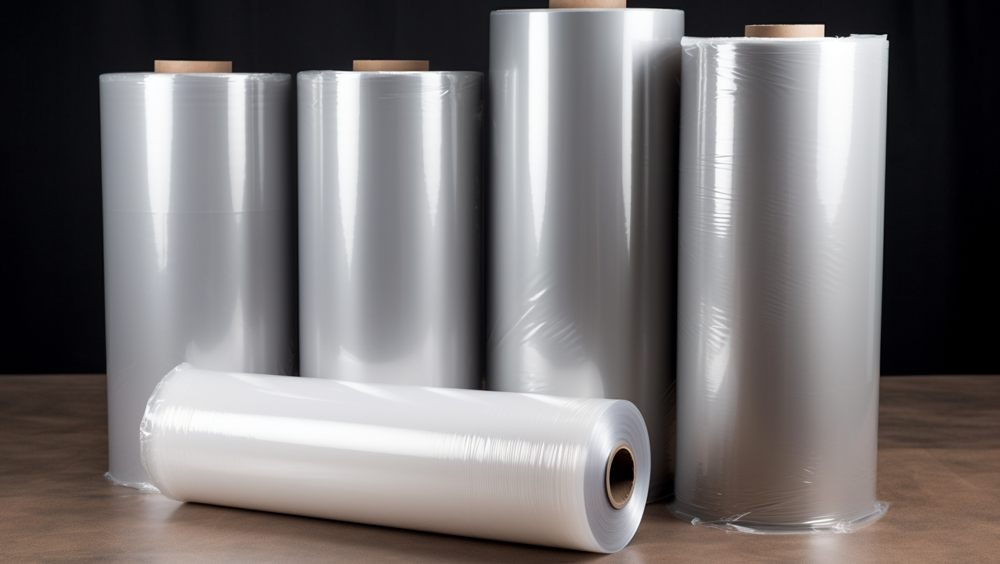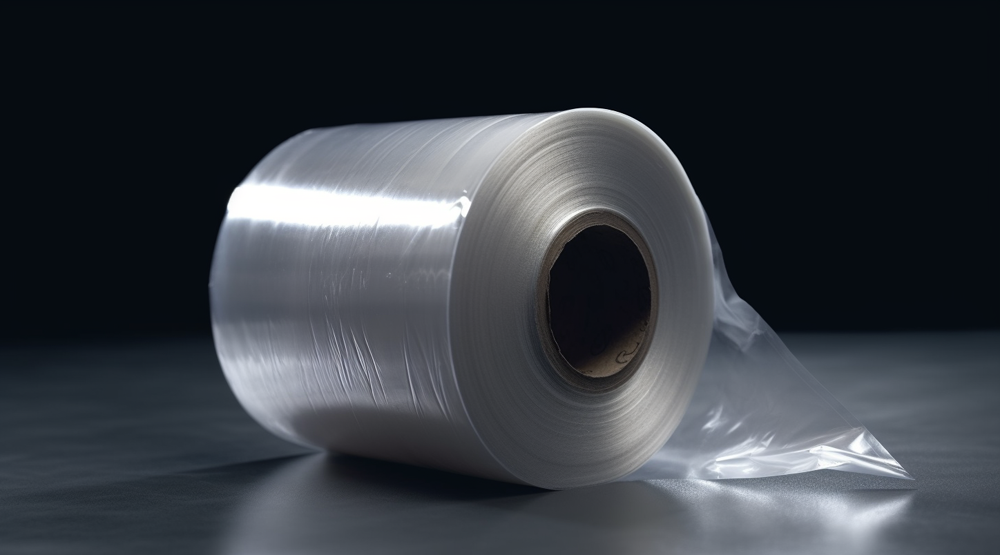Looking for a reliable and versatile packaging material for your storage and transportation needs? Look no further than stretch film! However, to ensure its optimal performance, it’s essential to understand the specifications and standards that govern its use.
Stretch Film Specifications and Standards:
- Stretch film is a highly stretchable plastic film used for packaging and securing products during shipping and storage.
- The film’s mechanical, optical, and barrier properties affect its performance and durability and must meet specific specifications and standards.
- Stretch film undergoes various testing methods, including tensile, tear, puncture, coefficient of friction, and oxygen and moisture transmission rate testing.
- Packaging and labeling standards, as well as regulations for transportation and disposal, must be adhered to.
Discover how the raw materials, extrusion process, and quality control measures impact stretch film production and performance, and learn about the testing methods used to ensure product consistency and quality.
What is the stretch film?

Stretch film, or stretch wrap, is a highly stretchable plastic film commonly used to secure and protect products during shipping and storage. It is made from polyethylene, a durable and flexible material that can be stretched and wrapped tightly around a product or pallet to securely hold it.
Stretch film is typically used in the packaging industry to wrap and secure items such as boxes, bags, and pallets. It is also used in the food industry to wrap and protect perishable items such as meat and produce. Additionally, the stretch film can bundle small items together or cover and protect furniture during a move.
Stretch Film Properties
Mechanical properties such as tensile strength, elongation, and tear resistance
- Tensile strength refers to the force required to break a material when stretched. To stretch film, it measures the film’s ability to resist breaking or tearing when stretched. A higher tensile strength indicates that the film can withstand more stress and strain, making it more durable.
- Elongation measures how far a material can stretch before it breaks. It is important for stretch film as it determines how much it can be stretched before it reaches its limit. A higher elongation indicates the film can be stretched further without tearing, allowing for more secure packaging.
- Tear resistance measures the ability of a material to resist tearing when pulled apart. The stretch film indicates how resistant the film is to tearing when it is being wrapped or unwrapped. A higher tear resistance means the film is more durable and can withstand more wear and tear.
Optical properties such as clarity and haze
- Clarity refers to the transparency of the film, allowing for easy visibility of the packaged product. A high-clarity film allows for easy product identification and inspection, making it particularly important for food and medical packaging.
- Haze refers to the degree of cloudiness or haziness of the film. The stretch film, haze, can impact the film’s ability to transmit light, affecting the appearance and quality of the packaged product. A low-haze film provides better clarity, making it a preferred option for packaging items that require high visibility.
Barrier properties such as oxygen and moisture transmission rates
- Barrier properties refer to the film’s ability to prevent the passage of oxygen and moisture through the film. Oxygen and moisture can negatively impact the product’s shelf life and quality, making it important to choose a film with barrier properties that match the product’s specific needs.
- Oxygen and moisture transmission rates measure the amount of oxygen and moisture that can pass through the film over time. A lower transmission rate indicates that the film provides better protection against the passage of oxygen and moisture, which is particularly important for products that require a longer shelf life.
Stretch Film Manufacturing Standards
Raw materials used in Stretch Film production
Stretch film is typically made from a variety of raw materials, with the most common being linear low-density polyethylene (LLDPE), which provides strength, flexibility, and elasticity. Other materials may be added to the film, including metallocene, ethylene vinyl acetate (EVA), and high-density polyethylene (HDPE), to enhance specific properties such as tear resistance, puncture resistance, and clarity.
The role of ingredients in the production of stretch film is to provide specific properties that match the needs of the product being packaged. The composition of raw materials affects the film’s strength, durability, and flexibility, which can impact the film’s ability to hold and protect the product.
Extrusion process and quality control measures
The extrusion process for making stretch film involves melting the raw materials and then extruding the molten plastic through a die to form a thin, continuous sheet. The sheet is then stretched in both directions, which aligns the molecules and creates a stronger, more durable film.
Quality control measures impact stretch film production by ensuring that the film meets specific performance and quality standards. These measures include monitoring the film’s thickness, width, and consistency during production and testing the film for strength, elasticity, and clarity.

Testing methods used to ensure product consistency and quality
Testing methods used in stretch film production include mechanical tests such as tensile strength, elongation, and tear resistance, as well as optical tests such as clarity and haze. Other tests may include barrier properties such as oxygen and moisture transmission rates.
Stretch film products are tested for quality and consistency by sampling rolls of film and performing various tests to ensure that the film meets specific performance and quality standards. Any variations or defects are identified and corrected before the film is released for sale.
Stretch Film Testing Standards
Tensile testing:
Tensile testing standards for stretch film measure the film’s strength and resistance to stretching. The test involves pulling the film until it breaks, and the force required to break the film is recorded.
Tensile testing is important in checking stretch film quality as it determines the film’s ability to withstand stress and strain during handling, shipping, and storage. The test results can help manufacturers identify any weaknesses or defects in the film that could affect its performance.
Tear resistance testing:
Tear resistance testing measures the film’s ability to resist tearing and is an important indicator of the film’s durability and performance during handling and transport.
Tear resistance testing is important in ensuring the stretch film’s quality as it helps identify any weaknesses or defects in the film that could affect its performance.
Puncture resistance testing:
Puncture resistance testing measures the film’s ability to resist puncture or penetration and is an important indicator of the film’s strength and durability.
Puncture resistance testing is important in ensuring quality stretch film as it helps identify any defects in the film that could lead to punctures or tears during handling, shipping, and storage.
Coefficient of friction testing:
The coefficient of friction measures the film’s resistance to sliding against other surfaces and is an important factor in the film’s ability to be easily wrapped and secured around products.
Coefficient friction testing is important in ensuring quality stretch film as it helps identify any issues with the film’s ability to adhere to product surfaces and maintain proper tension during transport and storage.
Oxygen and moisture transmission rate testing:
Oxygen and moisture transmission rate testing measure the film’s ability to prevent the passage of oxygen and moisture through the film, which is important in preserving the quality and shelf life of the packaged products.
Oxygen and moisture transmission rate testing are important in ensuring quality stretch film as it helps to identify any issues with the film’s barrier properties that could affect the product’s freshness and quality.
Stretch Film Packaging and Labeling Standards
A. Requirements for packaging and labeling Stretch Film products
| Standard | Description |
| Thickness | The film must meet the specified thickness requirements for the intended use |
| Width | The film must meet the specified width requirements for the intended use |
| Roll weight | The weight of each roll of film must be clearly labeled |
| Core size | The core size of each roll of film must be clearly labeled |
| Product identification | The product name, brand name, and manufacturer’s name and address must be clearly labeled |
| Safety information | Any relevant safety information, such as handling or disposal instructions, must be clearly labeled |
| Environmental certifications | Any relevant environmental certifications, such as recyclability or biodegradability, must be clearly labeled |
B. Regulations related to Stretch Film transportation, storage, and disposal
| Regulation | Description |
| DOT regulations | Stretch film must be transported in compliance with the Department of Transportation regulations for hazardous materials |
| Storage regulations | Stretch film must be stored in a cool, dry place away from sources of heat or sunlight |
| Disposal regulations | Stretch film must be disposed of in compliance with local and state regulations for waste disposal, and any hazardous components must be properly identified and handled |
| Recycling regulations | Stretch film must be recycled in compliance with local and state regulations for plastic recycling, and any contaminants must be removed prior to recycling |
| International regulations | Stretch film must comply with international regulations for transport, storage, and disposal, including those set by the International Maritime Organization (IMO) and International Air Transport Association (IATA) |

In Conclusion, Adhering to stretch film specifications and standards is crucial for ensuring the product’s quality, performance, and safety during handling, shipping, and storage. By understanding these standards, businesses can select the appropriate stretch film for their packaging needs and comply with regulations, providing customers with a reliable, consistent, and safe product.













